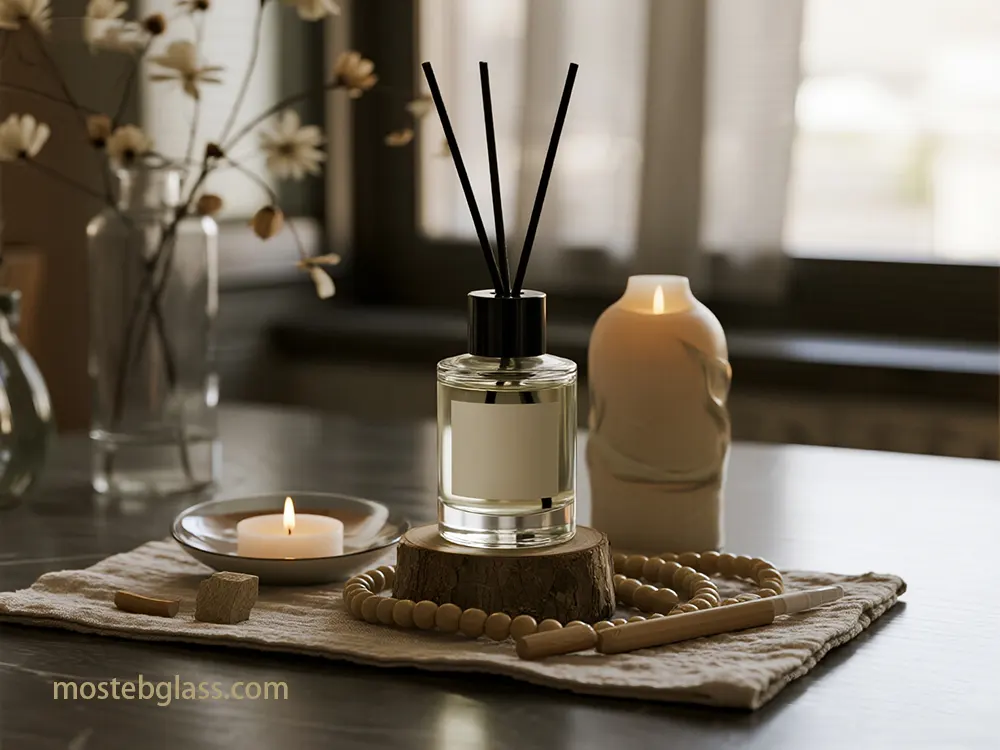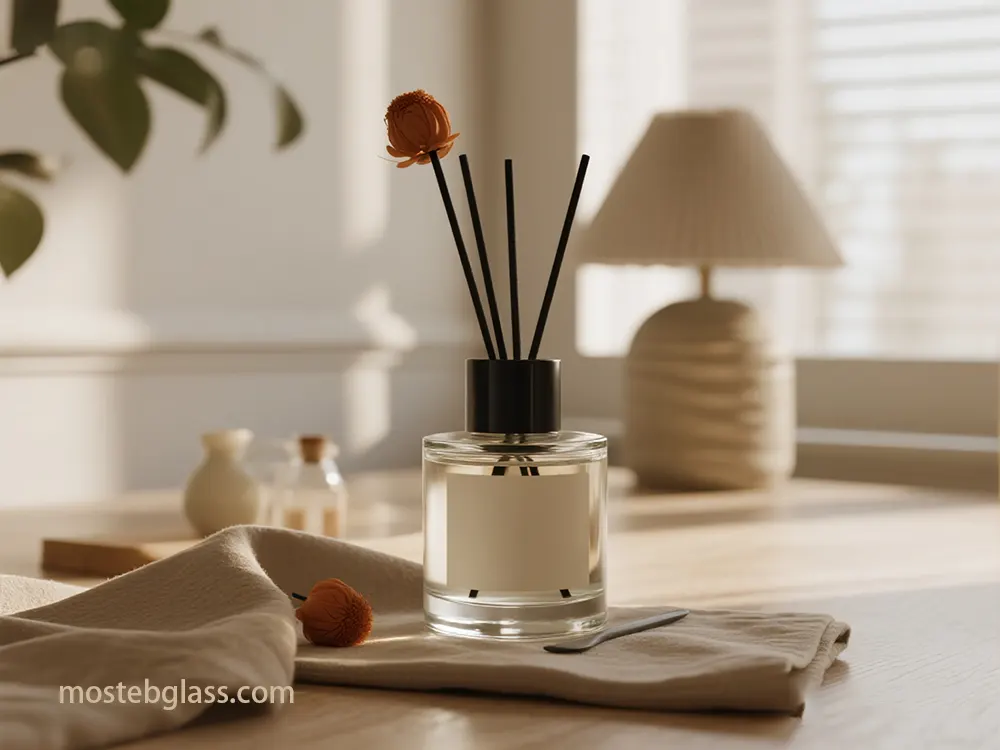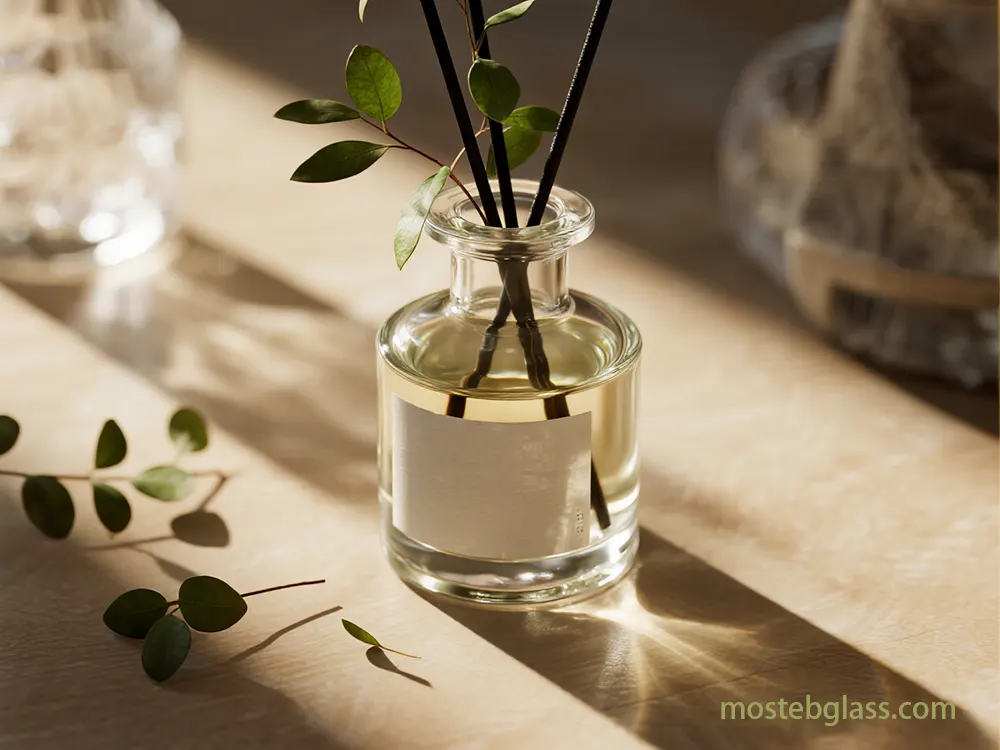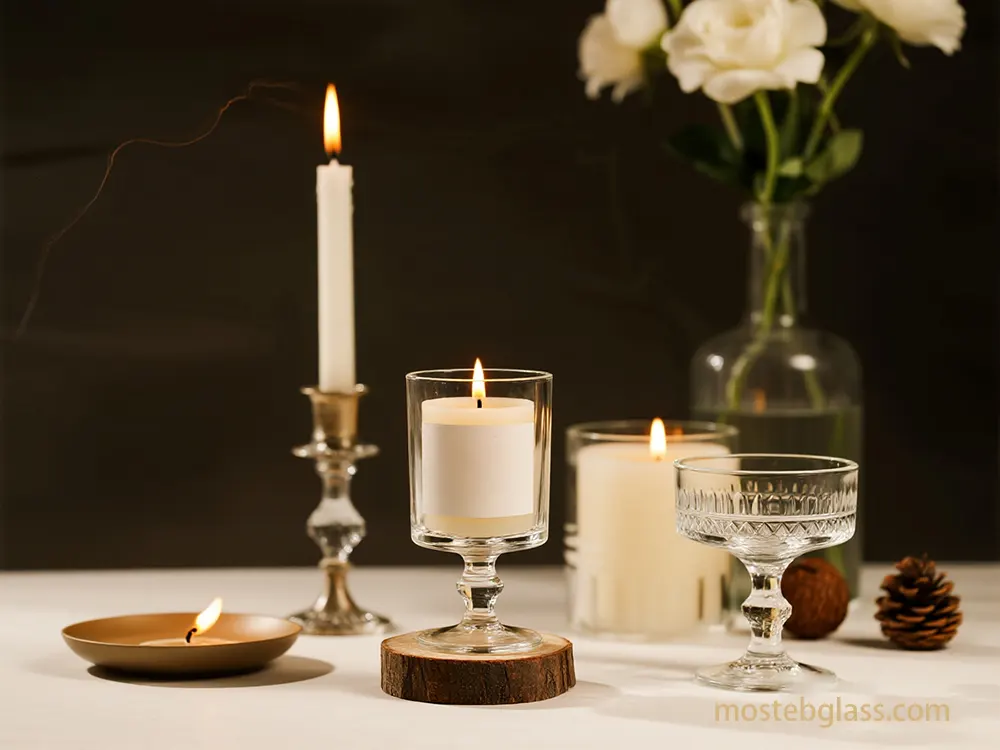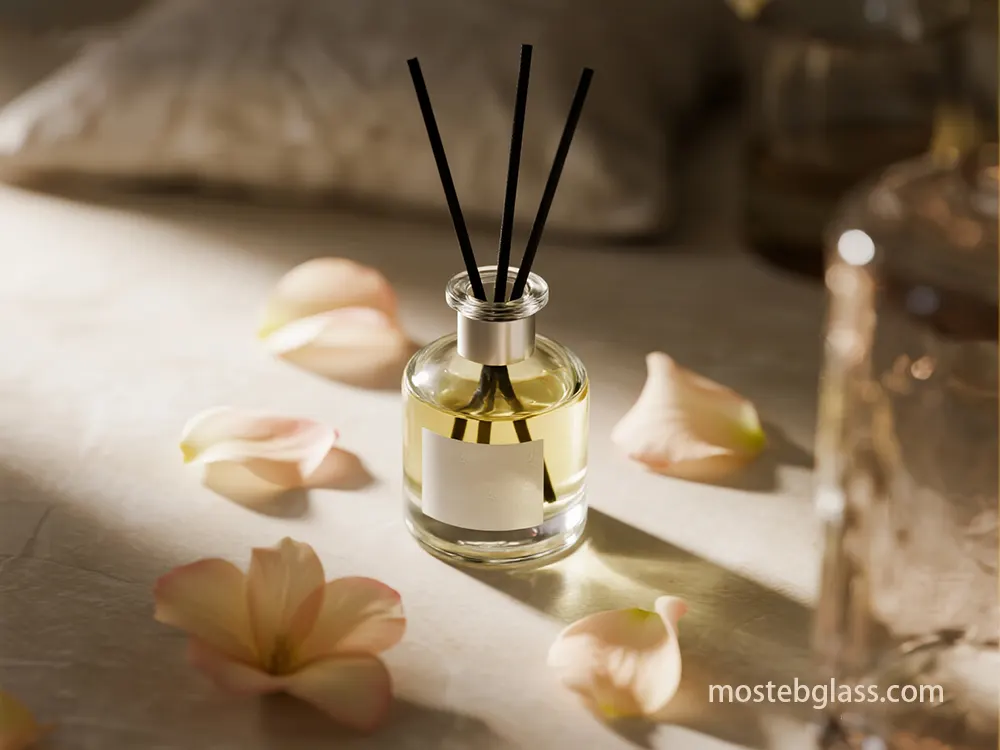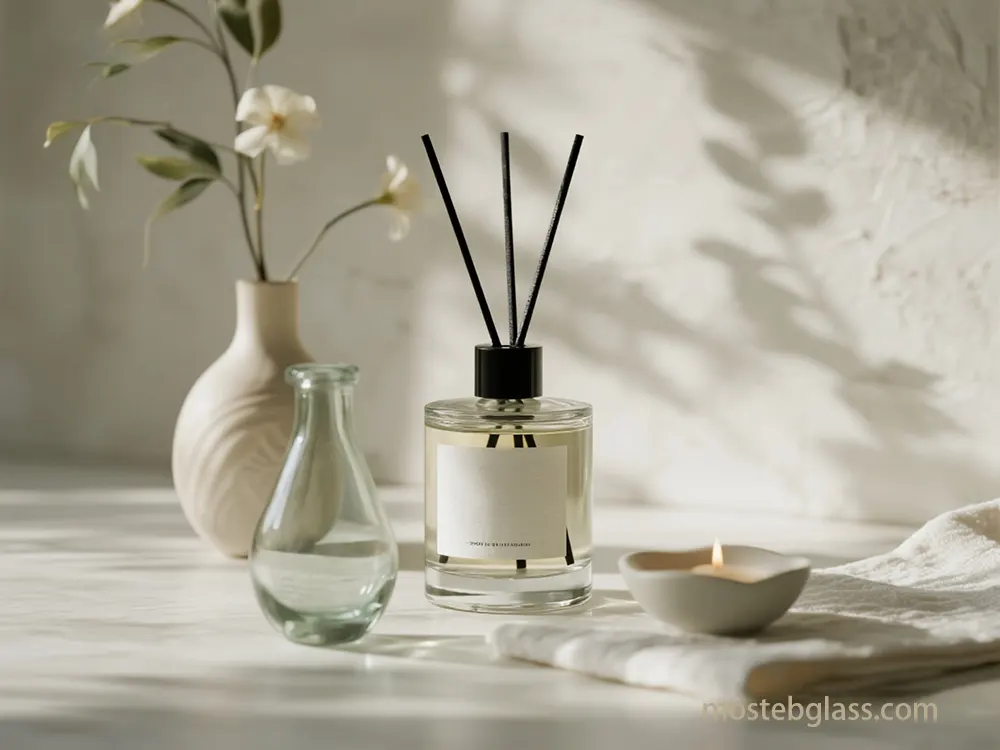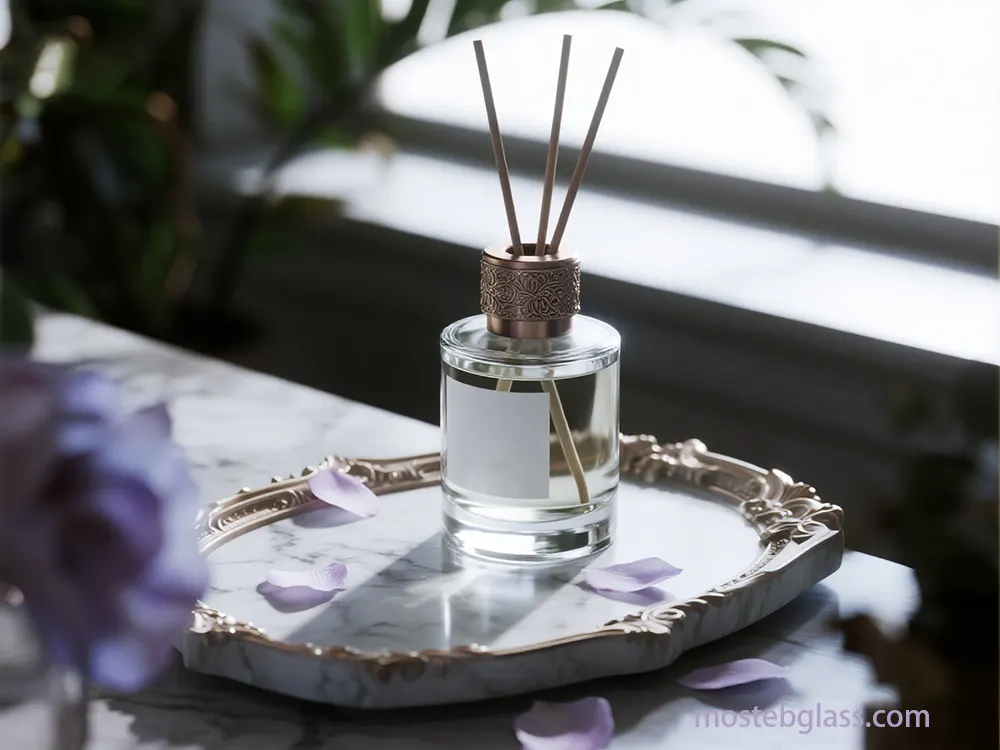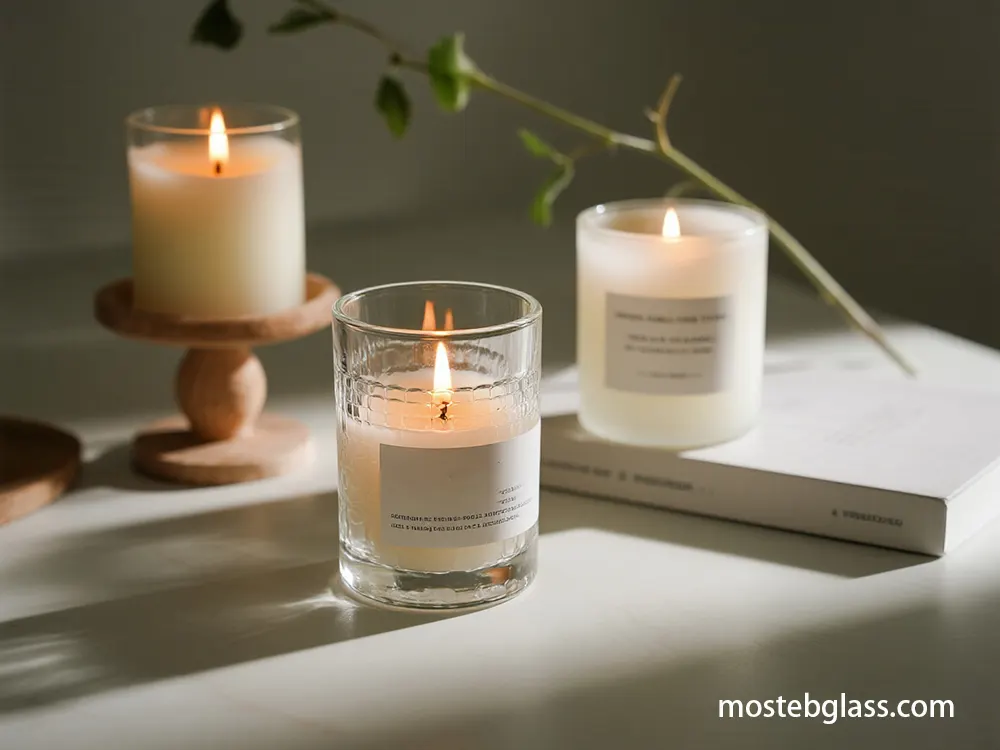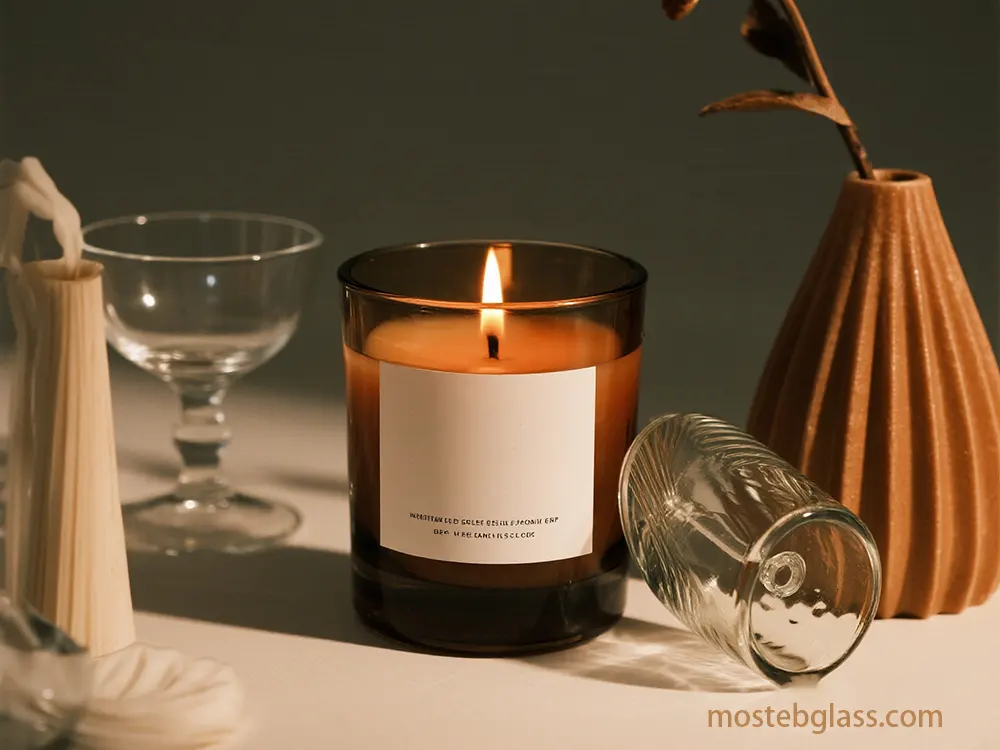Post-Consumer Recycled (PCR) Content:
PCR glass, reclaimed and endlessly reused, significantly conserves raw materials and reduces energy consumption (e.g., 2.5% energy reduction per 10% cullet increase).Growing regulatory pushes, like U.S. state mandates for PCR content in plastics, highlight its importance.While PCR can affect aesthetics, manufacturing advancements improve consistency.PCR supports a circular economy, reducing virgin material reliance and carbon emission.
Reusability and Refillability:
Consumer preference for sustainable packaging is strong, with 78% of U.S. shoppers prioritizing sustainable lifestyles and 79% likely to buy refillable products.Barriers include perceived inconvenience (37%), cleaning effort (42%), and lack of storage (47%).Despite this, successful models like Loop and specialized refill systems (ReCandle Co., Wyxcraft, Arbor Made) demonstrate viability.
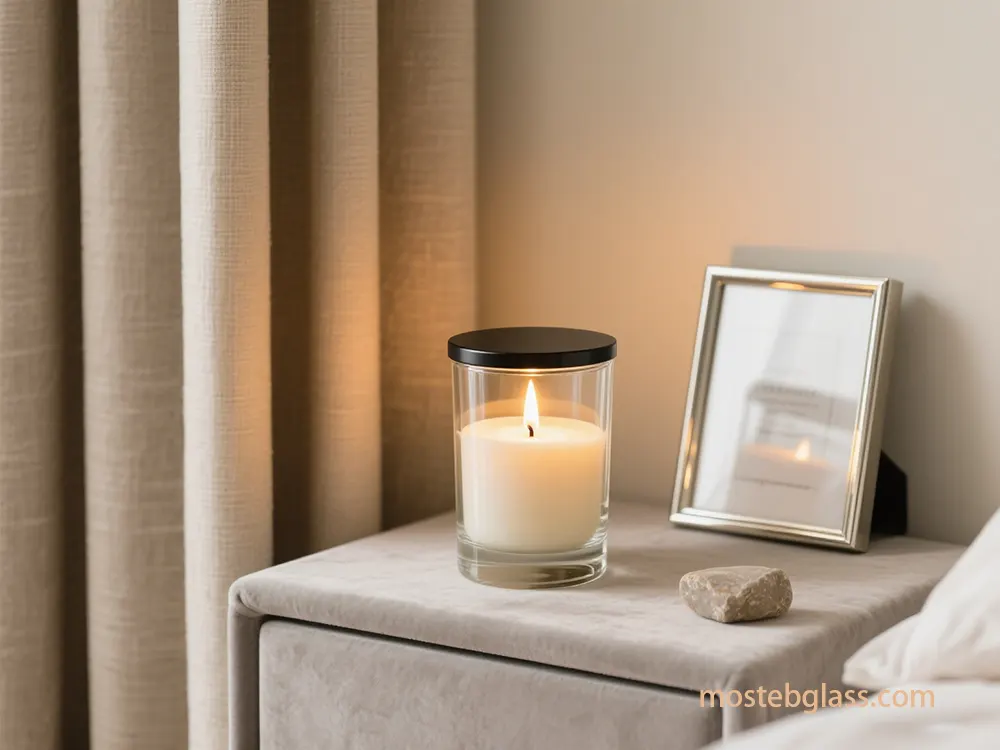
Carbon Footprint Reduction:
Minimizing carbon footprint requires assessing the jar’s entire life cycle, from raw material to end-of-life. Life Cycle Assessment (LCA) systematically evaluates environmental impacts (carbon, water, energy, waste) to identify “hotspots” for improvement. LCA methodology is standardized by ISO 14040/14044.
- End-of-Life Options: Jars should support robust end-of-life scenarios: high recyclability, industrial, or home compostability. Glass is endlessly recyclable. Bioplastics have nuanced pathways: industrial composting (55°C-70°C) is efficient, while home composting is slower and less effective.Certifications like ASTM D6400 and EN 13432 ensure industrial biodegradation within 12 weeks.However, compostable bioplastics in landfills can generate methane and interfere with traditional plastic recycling.
- 1.2. Preferred Materials Mosteb’s preferred materials balance environmental performance and functional integrity:
- Recycled Glass: Perceived as safe and premium, recycled glass reduces waste, is reusable, heat-resistant, and aesthetically versatile.Premium options are often BPA/lead-free and corrosion-resistant.
- Innovative Bioplastics: Promising alternatives for specific design or weight needs.
High-Temperature Cellulose-Based Bioplastics:
Researchers developed wood pulp-derived bioplastics with over 740°C heat resistance and low density.
- Biome Bioplastics’ BiomeHT Range: Offers high-temperature resistant, biodegradable, and compostable bioplastics (e.g., BiomeHT90, BiomeHTX) suitable for injection molding and certified for industrial composting. Spirulina-Based Bioplastics:
- University of Washington developed bioplastics from blue-green cyanobacteria that degrade like banana peels and are fire-resistant. PaperFoam®:
- Made from natural paper, potato starch, and organic binder; 100% compostable and recyclable, ideal for candle refills. PHA (Polyhydroxyalkanoate):
A naturally produced biopolymer, forming the basis for home compostable bioplastics when combined with other materials. - Polycarbonate: Durable, safe, and heat-resistant (over 130°C), it doesn’t shatter like glass.Companies like Intecplast offer polycarbonate jars (ReVel) as a glass alternative.
- 1.3. Essential Design and Functional Requirements Design and functional aspects are critical for safety, performance, and brand appeal:
- Heat Resistance and Safety Standards: Jars must withstand high burning temperatures without cracking.
- ASTM Standards (U.S.): Key standards include ASTM F2058 (labeling), ASTM F2179 (glass heat strength, requiring scratch/temper tests, thermal shock, and manufacturer documentation), and ASTM F2417 (fire safety, including flame height and container integrity).
EN Standards (EU):
Regulated by GPSD, EN 15493 covers fire safety (flame height, no secondary ignition/flaring, container integrity, 10° slope stability).EN 15426 addresses sooting (less than 1.0% soot).EN 15494 specifies safety labeling.
- Thermal Shock Testing: Assesses material’s resistance to sudden temperature changes (ASTM C149, ISO 7459:2004).
- Wick Requirements: EU bans lead wicks; NCA recommends lead-free.
- Lid Compatibility: Jars must work with sustainable lid materials (metal, wood, cork) to maintain integrity.
- Branding Capabilities: Design should allow effective branding via printing, labeling, or unique molds. The industry favors clean, minimalist aesthetics.
- Functional Reusability: Design should encourage repurposing empty jars (storage, plant pots) beyond just refilling, aligning with consumer trends.
- 2. Strategic Sourcing Parameters Strategic sourcing requires understanding primary geographic regions and estimated production volumes for targeted supplier identification.
- 2.1. Primary Geographic Regions for Supplier Search Region selection balances sustainability with logistics and market dynamics:
- North America: Significant glass manufacturing presence, with organizations like GMIC promoting sustainable practices. CPSC collaborates with ASTM on safety standards.Viable for domestic markets, reducing transport emissions. Leaders in glass recycling like Strategic Materials, Inc. (SMI) operate facilities across the region.Alfred University’s Center for Glass Innovation (CGI) researches recycling.
Europe:
Highly developed glass industry with strong sustainability focus. European Commission promotes energy efficiency, waste management, and recycling.EU glass manufacturing emissions are regulated by IED.Glass Alliance Europe advocates for the industry.The flat glass sector aims for carbon neutrality by 2050, having reduced CO2 emissions by 43% since 1990.Regulations like ESPR, EU ETS, and REACH drive sustainable practice.MAGNA Glaskeramik GmbH produces glass-ceramic from 100% recycled bottles.
Global Considerations:
विविधीकरण और प्रतिस्पर्धी मूल्य लाभ हैं, लेकिन इन्हें बढ़ते ट्रांसपोर्टेशन उत्सर्जन और विभिन्न नियामक वातावरण में कठिन स्थायित्व प्रमाणीकरण के खिलाफ संतुलित करना होता है। उभरते बाजारों में कम लागत की पेशकश की जा सकती है, लेकिन इसके लिए पर्यावरणीय और श्रम प्रथाओं पर ठोस विवेकशीलता की आवश्यकता होती है।
- 2.2. अनुमानित उत्पादन मात्रा या आर्डर मात्रा न्यूनतम आर्डर मात्रा (MOQ) को समझना लागत, लेड टाइम और इनवेंट्री के लिए महत्वपूर्ण है।
- MOQ अर्थ और प्रभाव: MOQ एक सप्लायर द्वारा उत्पादित न्यूनतम इकाइयां हैं, जो औचित्य और फिक्स्ड लागत को चूक करती हैं। उच्च MOQ के कारण छोटे व्यापार को रोका जा सकता है।
- चाँदी के गिलास के लिए त्यूहारी MOQ सीमा: तैयार स्टोक ग्लास गिलास: 3,000-5,000 टुकड़े।
सप्लायर ग्लास गिलास:
20,000-50,000 टुकड़े।
- सप्लायर ईको-फ्रेंडली पैकेजिंग बॉक्स: 50-100 टुकड़े।
- व्यापक कॉस्मेटिक पैकेजिंग:5,000-20,000 इकाइयां।
- सप्लायर लचीलेपन और वार्ता: कुछ सप्लायर (Shenzhen I Green, EcoPackables, LX Packaging) ईको-फ्रेंडली पैकेजिंग के लिए कम या शून्य MOQ प्रदान करते हैं। कम MOQ की रणनीतियां शामिल हैं जैसे कि स्टोक पैकेजिंग, मिक्स्ड बैच, दीर्घकालिक साझेदारी और कस्टमाइजेशन को सरल बनाना।
- मूल्य के प्रभाव: कम MOQ के कारण इकाइयों की लागत बढ़ सकती है, क्योंकि MOQ सप्लायरों को नकदी प्रवाह और उत्पादन को ऑप्टिमाइज करने में मदद करती है।
- सप्लायन चेन लचीलेपन पर प्रभाव: उपयोगी MOQ प्रबंधन और ईको-फ्रेंडली सामग्री के लचीलेपन सप्लायन चेन को मजबूत करते हैं।
- 3. पहचाने गए स्थायित्वशील चाँदी के गिलास सप्लायर Mosteb का सप्लायर पहचानना सततता के मानकों के अनुसार, सामग्री क्षमता, परिचालन आकार और भौगोलिक उपस्थिति के अनुसार किया जाता है।
- 3.1. प्रमाणीकरण और परीक्षण संस्थाएं Mosteb को संबंधित प्रमाणीकरण वाले सप्लायरों को और तीसरी पार्टी परीक्षण की इच्छा को प्राथमिकता देनी चाहिए।
- प्रमाणीकरण संस्थाएं: SCS Global Services:
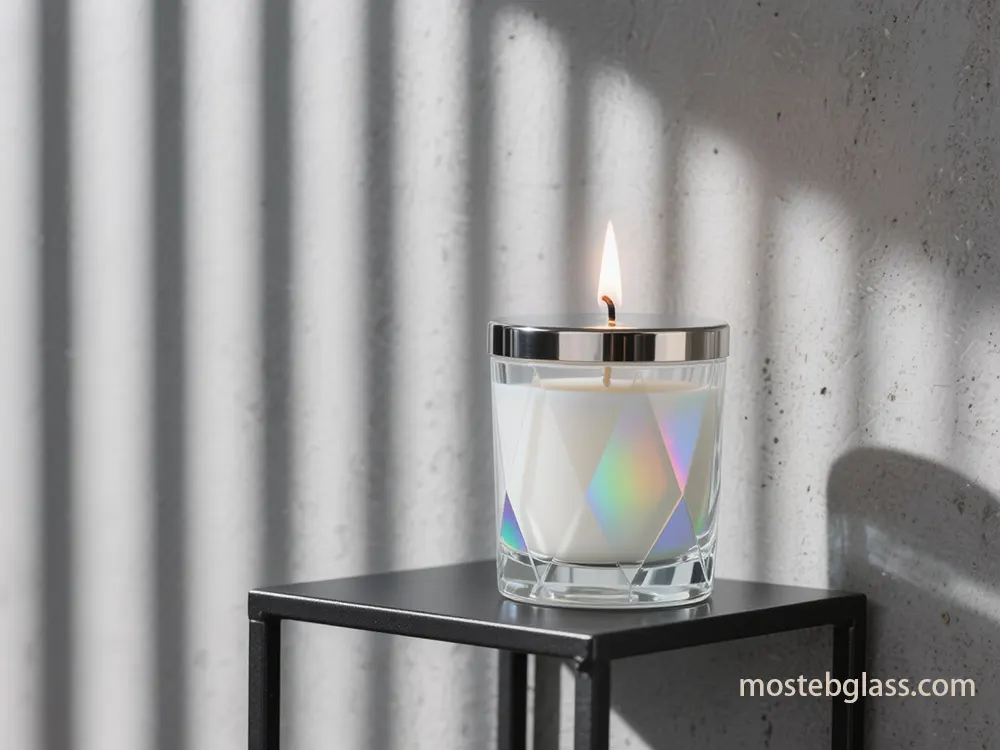
तीसरी पार्टी के प्रमाणीकरण के लिए पर्यावरणीय, सततता और गुणवत्ता दावों के लिए, जिसमें पुनर्चक्रीकरण की सामग्री और पौधे-आधारित उत्पादों शामिल हैं।
Cradle to Cradle Certified:
दुनिया के लिए विशेष, वृत्तीय, संभावित व्यापार के लिए पांच वर्गों में सुरक्षित, वृत्तीय और संभावित व्यापार के लिए विशेषज्ञ।
बायोडिग्रेडेबल प्रोडक्ट्स इंस्टीट्यूट (BPI):
जो नकदी प्रवाह के लिए ASTM D6400 और D6868 के तहत वायर करने वाली उत्पादों को प्रमाणीकरण करता है।
- परीक्षण प्रयोगशालाएं: इंटरटेक, QIMA, डीक्रा, ट्यूव राइनलैंड, जीएस लैबोरेटरी:
- समूहीक बत्ती परीक्षण (चूल्हा सुरक्षा, धुआँ, जलन का प्रदर्शन, संरचनात्मक अखंडता, लेबलिंग) उपलब्ध कराएं। डीक्रा DIN EN ISO/IEC 17025 के तहत मान्यता प्राप्त है। यह सूची Mosteb के लिए क्षमता सप्लायरों से संपर्क करने के लिए एक शुरुआती लाइन प्रदान करती है, जिसमें स्थायी सामग्री और ऑपरेशनल कौशल को ध्यान में रखा जाता है।
- 4. सप्लायर एकीकरण और चयन ढांचा एक आधारित विधि Mosteb के लिए उपयुक्त स्थायी बत्ती कारा सप्लायरों को मूल्यांकित और चयन करने के लिए महत्वपूर्ण है, जिसमें ऑडिट्स, KPIs और विश्लेषणीय उपकरणों का समाहार किया जाता है।
4.1. मूल्यांकन के लिए व्यवस्थित विधि
- मूल्यांकन प्रक्रिया बहु-�रणीय होनी चाहिए: प्रारंभिक फिल्ट्रेशन और क्वालिफिकेशन:
स्थायत्व दावे:
पीसीआर सामग्री के लिए दस्तावेज़ और प्रमाणपत्र (SCS ग्लोबल सर्विसेज, क्रैडल टू क्रैडल, BPI) के लिए आवश्यकता रखें।
सामग्री सहभागिता:
पसंदीदा सामग्रियों (पुनर्चक्रण वाला ग्लास, उच्च तापमान बायोप्लास्टिक्स) की क्षमता पुष्टि करें।
उत्पादन क्षमता/मिनिमम आर्डर ऑफर:
Mosteb के अनुमानित आर्डर मात्राओं के साथ सुझाव की जाँच करें।
- भौगोलिक उपस्थिति: उत्तर अमेरिका और यूरोप को प्राथमिकता दें ताकि उत्सर्जन कम करने के लिए, विशेष ज़रूरतों के लिए अंतर्राष्ट्रीय विकल्पों को ध्यान में रखें।
- विस्तृत ऑडिट और उत्तरदायित्व: पर्यावरण व्यवस्था:
- EMS ऑडिट (उदाहरण के लिए ISO 14001), बिजली/पानी के उपयोग, कचरा, उत्सर्जन, रासायनिक प्रबंधन। नैतिक श्रम:
- काम करने की स्थिति, मजदूरी और बच्चों/जबर्दस्ती काम के अभाव (उदाहरण के लिए SA8000) [निर्दिष्ट नहीं]। सप्लाय श्रृंखला की पारदर्शिता:
कच्चे सामग्री के उत्पत्ति और पीसीआर सामग्री की पुष्टि करें। ट्रेसेबिलिटी के लिए ब्लॉकचेन की तलाश करें [निर्दिष्ट नहीं]।
- उत्पादन सुरक्षा/सम्मानन: ASTM (F2179, F2417), EN (15493, 15426, 15494) और रासायनिक नियमों (REACH, RoHS) के साथ योग्यता साधन करें।
- स्थानीय पुष्टि: सत्यापन के लिए ऑडिट करें और अंतर्गत कटिबद्धता का मूल्यांकन करें [निर्दिष्ट नहीं]।
- जीवन चक्रीय मूल्यांकन (LCA) एकीकरण: सामग्री की तुलना के लिए LCA:
- एलसीए का उपयोग डिजाइन, सामग्री और प्रणालियों (उदाहरण के लिए, एकबार के उपयोग के बजाय फिल करना) के पर्यावरणीय प्रदर्शन की तुलना करने के लिए करें। यह रासायनिक सामग्री से निपटान तक के प्रभाव को मूल्यांकित करता है। एलसीए सॉफ्टवेयर:
- SimaPro, GaBi, PIQET, EcoImpact-COMPASS, Sphera के लिए पैकेजिंग एलसीए या Anthesis Group के PortfolioPro जैसे उपकरणों का उपयोग करें। सरल उपकरण (KIDV, Botta) शुरुआती तुलनाओं के लिए। डाटा आवश्यकताएं:
सप्लायर्स को उपचारित सामग्री, ऊर्जा, उत्सर्जन, कचरा और परिवहन पर सही एलसीए के लिए डाटा प्रदान करना होना चाहिए।
- ISO अनुपस्थिति: ISO 14044-संगत एलसीए करें बल्गी जांच के लिए।
- 4.2. सप्लायर चयन के मुख्य मानक मानकों को मापदण्डीय और सततता और ऑपरेशनल प्रदर्शन से जुड़े होने चाहिए:
- पर्यावरणीय प्रदर्शन: पुन: प्रयोग सामग्री प्रतिशत (उदाहरण के लिए, लक्ष्य 50%+ PCR)।
- कार्बन छाप (एलसीए से एकाधिकता के साथ)। ऊर्जा/जल कुशलता (किलोवाट एकाधिकता, लीटर एकाधिकता) [निष्पत्ति]।
कचरे के वितरण दर [निष्पत्ति]।
प्रमाणपत्र (क्रैडल टू क्रैडल, SCS ग्लोबल सर्विसेज, BPI)।
- ऑपरेशनल और गुणवत्ता:
- ताप विश्वासी/सुरक्षा अनुपालन (ASTM F2179, EN 15493, तापमान का आश्चर्य पास कोटिंग)।
- गुणवत्ता नियंत्रण (दोष शुल्क, एकरूपता)।
- लीड टाइम और समय पर डिलिवरी।
- लागत उपयोगकर्ता (एकाधिकता की लागत, लंबी अवधि की बचत)।
- सामाजिक और नैतिक:
- श्रम प्रथाओं का अनुपालन (जांचा गया) [निष्पत्ति]।
- पारदर्शिता स्कोर (सप्लाय चेन रिकॉर्ड्स, ट्रेसेबिलिटी) [निष्पत्ति]।
- नवाचार और भविष्य की तैयारी:
- सतत सामग्री/पुनर्चक्रण में अनुसंधान और विकास का निवेश।
- बदलती आवश्यकताओं के लिए अनुकूलता।
- 4.3. सकारात्मक समाधान और अपेक्षित जरूरतें
- सप्लायर विकास:
- आशाजनक वाहकों के लिए अनुप्रयोग क्रियान्वित करें सततता प्रथाओं में सुधार (उदाहरण के लिए, बिजली आयोजन, कचरा प्रबंधन) [निष्पत्ति]।
- दीर्घकालिक साझेदारी:
- Foster relationships for higher pricing, MOQ flexibility, and collaborative innovation.
- Diversified Sourcing:
Mitigate risks via diversifying suppliers in the course of regions and substances.
- Circular Economy Integration: Explore take-again applications, neighborhood recycling collaborations, or funding in advanced recycling for Mosteb’s waste streams.
- Consumer Education: Educate consumers on reusability and proper disposal via clear labeling (EN 15494) and instructions to increase participation and address confusion.
- Digital Monitoring: Implement digital tracking for inventory and supply chain visibility.Define KPIs for ongoing supplier sustainability performance (recycled content, energy/unit, waste reduction) [n/a].
- This robust framework permits Mosteb to optimistically choose out partners assembly stringent sustainability and first-rate requirements, contributing to a resilient and responsible deliver chain. 5.Future Trends and Innovations in Sustainable Packaging
- The sustainable packaging panorama is dynamic. Mosteb must stay abreast of trends for long-term strategic planning and competitive advantage. 5.1. Emerging Materials
- Novel materials offer enhanced sustainability and performance: Advanced Bioplastics:
High-Temperature Cellulose-Based:

Research shows wood pulp-derived bioplastics with over 740°C heat resistance and low density, potentially revolutionizing candle jar design.
Spirulina-Based:
University of Washington developed bioplastics from cyanobacteria that degrade like banana peels and are hearth-resistant.
Gaining traction for domestic compostable bioplastics, obviously produced by way of microorganisms, offering versatility for custom answers.
- Bio-based Composites:
- Integration of substances like hemp, timber, cork, and straw into composites shows promise for stepped forward thermal insulation, adaptable for candle jars. Mycelium-Based Packaging:
- (Speculative) Mushroom root structures are emerging for protective packaging. Their biodegradability and customizable forms could be future candidates for outer packaging or structural components, especially for refill systems. Salt-Based Packaging:
- Heat Resistance and Safety Standards: 5.2. Advanced Manufacturing Processes
- Innovations are making sustainable materials more viable and efficient: AI and Robotics in Sorting:
- Improves efficiency and reduces contamination in sorting recycled glass and ceramics, increasing quality PCR cullet. Chemical Recycling for Glass:
- Explored to break down glass into raw components for specific reuse. Flash-Sinter Crystallization:
Allows ultra-rapid crystallization of glass, saving energy and time in glass-ceramic production.
Selective Powder Deposition (SPD):
- iro3d SPD produces glass-ceramic parts from recycled glass powders, permitting customized designs. Closed-Loop Systems:
- Developing non-stop biking of ceramic and glass waste again into manufacturing, minimizing waste and maximizing aid usage. 5.3. Market Shifts and Consumer Behavior
- Understanding evolving marketplace dynamics and client possibilities is key: Growing Demand:
- Clear and growing demand for sustainable merchandise, pushed thru patron awareness and guidelines.Seventy eight% of U.S. Buyers prioritize sustainable life. Shift to Reusable/Recyclable:
- UK government’s cognizance shifted from biodegradable/compostable plastics to reusable/recyclable due to infrastructure issues.Consumers often misunderstand bioplastic decomposition. Incentives for Reusable Packaging:
Loyalty points and value savings drive adoption.Refilling can be extra low-priced.
Digital Transformation:
- Digital monitoring in packaging streamlines inventory and enhances supply chain resilience. Local Sourcing:
- Bio-based substances provide neighborhood sourcing opportunities, decreasing delivery emissions. Policy and Regulation:
- EU Packaging and Packaging Waste Regulation (PPWR) emphasizes sustainable packaging, with biobased plastics crucial for circular economy dreams.Mandatory LCA in procurement will lessen CO2. U.S. Lacks federal bioplastic standards, leading to misleading labeling. 5.4. Proactive Strategies for Mosteb
- To leverage these trends, Mosteb should consider: R&D Partnerships:
- Collaborate with universities (e.G., Alfred University) and startups to explore new sustainable substances and strategies. Robust Refill Programs:
- Expand person-friendly refill structures, supplying DIY kits or in-shop offerings. Transparent Communication:
Clearly speak sustainability attributes (PCR content material, reusability, give up-of-existence) to construct accept as true with and counter greenwashing.
इन रुझानों का लाभ उठाने के लिए, Mosteb को निम्ने को ध्यान में रखना चाहिए:
- R&D सहयोगीताएं: विश्वविद्यालयों (उदाहरण के लिए, Alfred University) और स्टार्टअप से सहयोग करके नए स्थायी पदार्थों और रणनीतियों की तलाश करें।
- मजबूत रिफिल कार्यक्रम: व्यक्ति-अनुकूल रिफिल संरचनाएं बढ़ाएं, DIY किट या शॉप-अनुदान प्रदान करें।
- पारदर्शी संचार: स्थायित्व के गुणों (PCR सामग्री, पुनर्व्यवहार्यता, जीवनांत्य विल्निंग) को स्पष्ट रूप से बताकर सहमति बनाने और हरित धोखाधड़ी का खंडन करें।
- नीति परिवर्तन के लिए अभिवादन: उद्योग संघों (GMIC, ग्लास एलायंस यूरोप) और नीति निर्माताओं से संलग्न होकर स्पष्ट आवश्यकताओं और उन्नत बुनियादी ढांचे के लिए लगना।
- उन्नत पुनर्चक्रीकरण बुनियादी ढांचा: ग्लास और सिरामिक्स के लिए उत्तम पुनर्चक्रीकरण के उपयोग के साथ केंद्रों के साथ सहयोगी जाँचें एक चक्रीक विधि के लिए।
इन विकासों के साथ सक्रिय रूप से आकर्षित होकर, Mosteb बदलती हुई मांगों को पूरा कर सकता है और स्वस्थ माया बनामी उत्पादन के पिता के रूप में स्थापित कर सकता है।




